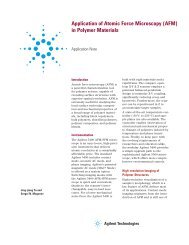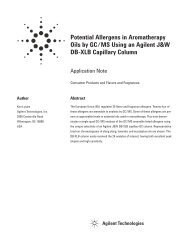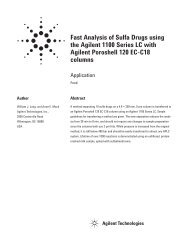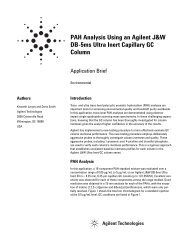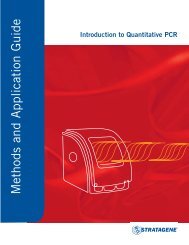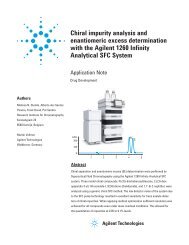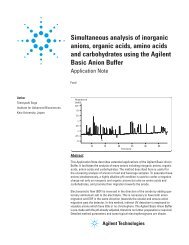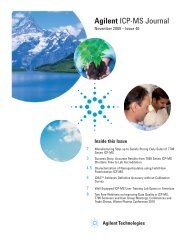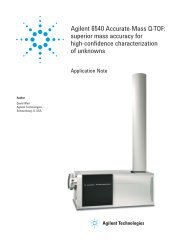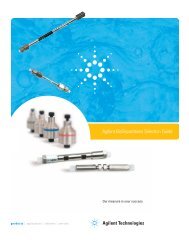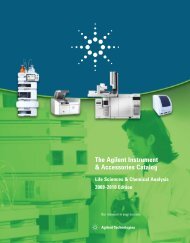Brilliant III Ultra-Fast qPCR/QRT-PCR Master Mixes for ABI ...
Brilliant III Ultra-Fast qPCR/QRT-PCR Master Mixes for ABI ...
Brilliant III Ultra-Fast qPCR/QRT-PCR Master Mixes for ABI ...
You also want an ePaper? Increase the reach of your titles
YUMPU automatically turns print PDFs into web optimized ePapers that Google loves.
<strong>Brilliant</strong> <strong>III</strong> <strong>Ultra</strong>-<strong>Fast</strong> SYBR ® Green<br />
Q<strong>PCR</strong> <strong>Master</strong> Mix<br />
Quick Reference Guide <strong>for</strong> the <strong>ABI</strong> StepOnePlus<br />
Real-Time <strong>PCR</strong> System<br />
This quick reference guide provides an optimized protocol <strong>for</strong> using<br />
the Stratagene <strong>Brilliant</strong> <strong>III</strong> <strong>Ultra</strong>- <strong>Fast</strong> SYBR® Green Q<strong>PCR</strong> <strong>Master</strong><br />
Mix with the StepOnePlus Real- Time <strong>PCR</strong> System from Applied<br />
Biosystems. For detailed instructions, refer to the full product<br />
manual.<br />
Prepare the<br />
Reactions<br />
1 Dilue the reference dye 1:50 using nuclease- free <strong>PCR</strong>- grade water.<br />
2 Prepare the experimental reactions by combining the components of the<br />
reagent mixture in the order listed in the table below. Prepare a single<br />
reagent mixture <strong>for</strong> replicate reactions (plus at least one reaction<br />
volume excess) using multiples of each component.<br />
Reagent Mixture<br />
Nuclease-free <strong>PCR</strong>-grade water to bring final volume to 20 μl (including DNA)<br />
10 μl of 2× SYBR Green Q<strong>PCR</strong> <strong>Master</strong> Mix<br />
x μl of upstream primer at optimized concentration (200–500 nM)<br />
x μl of downstream primer at optimized concentration (200–500 nM)<br />
0.3 μl of diluted reference dye<br />
3 Gently mix the reagent mixture without creating bubbles, then<br />
distribute the mixture to the experimental reaction tubes.<br />
4 Add x μl of experimental DNA to each reaction to bring the final<br />
reaction volume to 20 μl. The table below lists a suggested quantity<br />
range <strong>for</strong> different DNA templates.<br />
DNA<br />
Genomic DNA<br />
cDNA<br />
Quantity per reaction<br />
5 pg – 50 ng<br />
0.5 pg – 100 ng*<br />
*Refers to RNA input amount during cDNA synthesis<br />
5 Mix the reactions without creating bubbles, then centrifuge briefly.<br />
Stratagene Products Agilent Technologies<br />
1




